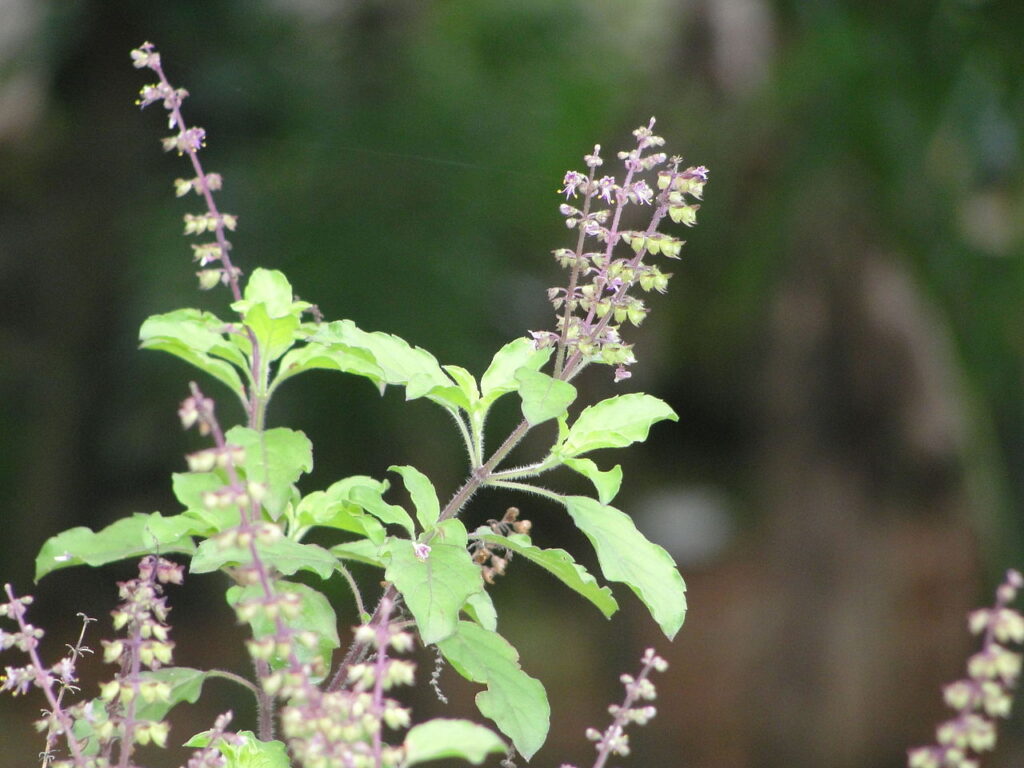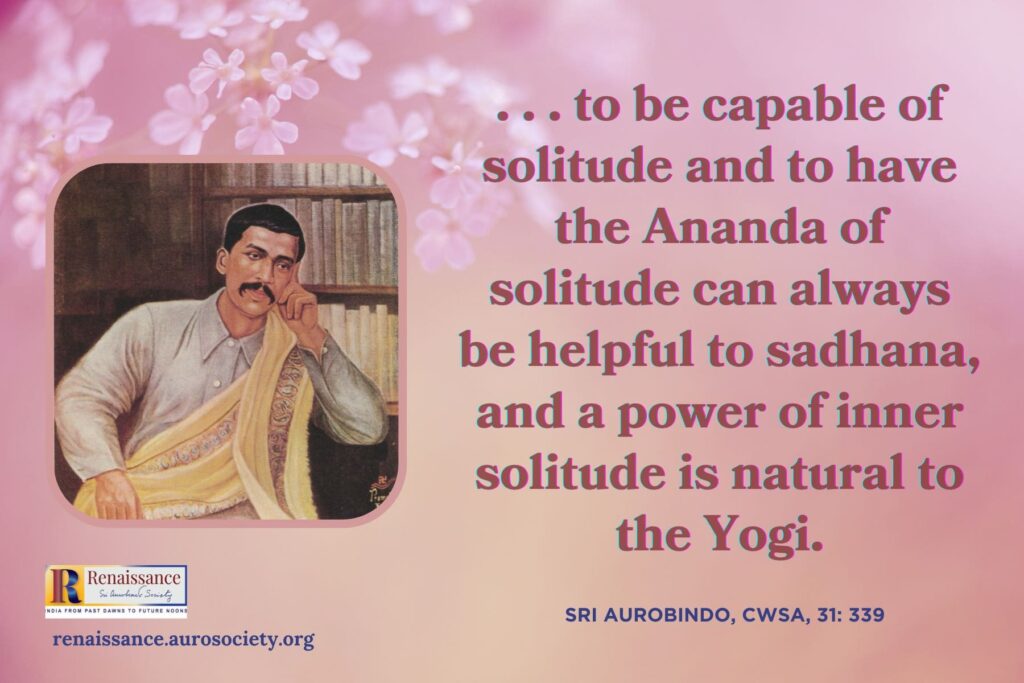Editor’s Note: In some of our previous issues, we have featured several passages which speak of the Mother’s intimate connection with flowers, plants, trees and everything in Nature (read HERE, HERE, and HERE). In our present issue, we highlight a few conversations of the Mother in which she focuses on the Beauty aspect of the Divine that is expressed through flowers and all Nature. This includes the fragrance of the flowers, and that too was one of the ways the Mother identified with the vibration of a flower. We also learn about how the Mother gave spiritual significance to many flowers. Some sub-headings are added for the ease of digital reading.

Everything Nature Does is Beautiful
(Mother gives the disciple a cadamba flower which she has named ‘Supramental Sun’—a striking orange ball consisting of innumerable stamens)

It’s beautiful, isn’t it? It’s all together, but it’s innumerable. It’s ONE thing going in all directions. And what a color! The tree is glorious.
Nature is a marvelous inventor—everything She does is beautiful. I don’t believe that man has succeeded in producing anything so perfect. Later, it’s true, some new species were developed by him, but nevertheless Nature still remains the origin.
Disciple: Yes, ugliness seems to begin with man.
I think that even what seems to us ugly in animal and vegetal nature appears so only because of the limitations of our own understanding. But really, as soon as man enters the scene … phew!
Yes, I have always felt that in Nature one can live in beauty, always. But then once man shows up, something gets thrown out of joint. It’s the mind, actually. What gives birth to ugliness is really the intrusion of the mind in life. I wonder if it was necessary, if it could not have been immediately harmonious. But it appears not.
Even stones are beautiful; they are always beautiful in one way or another. When life appeared, there were some forms that were a little ‘difficult,’ but not to that extent, not like certain human mental creations. Of course, there may have been some animal species which were rather … but they were more monstrous than actually ugly. And most probably, it only seems like that to our consciousness.
But the mind … And it’s the same for all these ideas of sin, of wrong, of … all that—it’s a falsehood. But it was man who invented falsehood, wasn’t it? The mind invented falsehood: to deceive! to deceive! And it’s a curious fact that animals domesticated by man have also learned to lie!

Fragrance and Spiritual Significance of Flowers
Here, I have brought you two flowers. They have two different yet very typically Indian fragrances: this one is Straightforwardness, and this is Simplicity. I have always found that this one (Mother holds out the Simplicity) has a cleansing fragrance: when you breathe it, ah, everything becomes clean—it’s wonderful! (Mother breathes in the flower’s fragrance.)
Once I cured myself of the onset of a cold with it—this can be done when you catch it at the very beginning. It fills you completely, the nose, the throat…. And this [Straightforwardness] is right at the other end of the spectrum. I find it very, very powerful—strange, isn’t it?
It’s not at all sweet-smelling.
Oh, no! It’s quite strong.


It’s largely the fragrances that have made me give flowers their significance…. I find these studies quite interesting; it corresponds to something really TRUE in Nature.
Once, without telling me anything, someone brought me a sprig of tulsi. I smelled it and said, ‘Oh, Devotion!’ It was absolutely a… a vibration of devotion. Afterwards, I was told it’s the plant of devotion to Krishna, consecrated to Krishna.
Another time, I was brought one of those big flowers (which are not really flowers) somewhat resembling corn, with long, very strongly scented stalks. I smelled it and said, ‘Ascetic Purity!’ Just like that, from the odor alone. I was later told it was Shiva’s flower when he was doing his tapasya. [Ed. – The Mother later named this flower ‘Spiritual Perfume’.]


Conscious Vibrations in Nature
These people have an age-old knowledge—the ancient Vedic knowledge which they have preserved. In other words, it is something CONCRETELY TRUE: it doesn’t depend at all on the mind, on thought or even on feelings—it’s a vibration.
What about this flower, this long corn-like stalk?
Yes, this flower is Shiva, doing his tapasya.
And interestingly enough, its smell is fantastically attractive to snakes; it makes them come from far away to nest in the shrubs. And as you know, the serpent is the power of evolution, it is Shiva’s own creature; he always puts them on his head and around his neck because they symbolize the power of evolution and transformation. And snakes like this flower; it often grows near rivers, and wherever there is a cluster of the plants you are sure to discover snake nests.
I find this very interesting, for WE didn’t decide it should be like this: these are conscious vibrations in Nature. The fragrance, the color, the shape, are simply the spontaneous expressions of a true movement.
Beauty in Flowers
Disciple: Is there a sense of beauty in flowers?
As soon as there is organic life, the vital element comes in, and it is this vital element which gives to flowers the sense of beauty. It is not perhaps individualised in the sense we understand it, but it is a sense of the species and the species always tries to realise it. I have noticed a first rudiment of the psychic presence and vibration in vegetable life, and truly this blossoming one calls a flower is the first manifestation of the psychic presence.
The psychic is individualised only in man, but it was there before him; but it is not the same kind of individualisation as in man, it is more fluid: it manifests as force, as consciousness rather than as individuality. Take the rose, for example; its great perfection of form, colour, scent expresses an aspiration and a psychic giving. Look at a rose opening in the morning at the first touch of the sun, it is a magnificent self-giving in aspiration.

Disciple: Each flower has its special significance, hasn’t it?
Not as we understand it mentally. There is a mental projection when one gives a precise meaning to a flower. It may answer, vibrate to the touch of this projection, accept the meaning, but a flower has no equivalent of the mental consciousness.
In the vegetable kingdom there is a beginning of the psychic, but there is no beginning of the mental consciousness. In animals it is different; mental life begins to form and for them things have a meaning.
But in flowers it is rather like the movement of a little baby—it is neither a sensation nor a feeling, but something of both; it is a spontaneous movement, a very special vibration.
So, if one is in contact with it, if one feels it, one gets an impression which may be translated by a thought. That is how I have given a meaning to flowers and plants—there is a kind of identification with the vibration, a perception of the quality it represents and, little by little, through a kind of approximation (sometimes this comes suddenly, occasionally it takes time), there is a coming together of these vibrations (which are of a vital-emotional order) and the vibration of the mental thought, and if there is a sufficient harmony, one has a direct perception of what the plant may signify.
In some countries (particularly here) certain plants are used as the media for worship, offering, devotion.
Certain plants are given on special occasions. And I have often seen that this identification was quite in keeping with the nature of the plant, because spontaneously, without knowing anything, I happened to give the same meaning as that given in religious ceremonies.
The vibration was really there in the flower itself…. Did it come from the use that had been made of it or did it come from very far, from somewhere deep down, from a beginning of the psychic life? It would be difficult to say.
~ Design: Beloo Mehra



